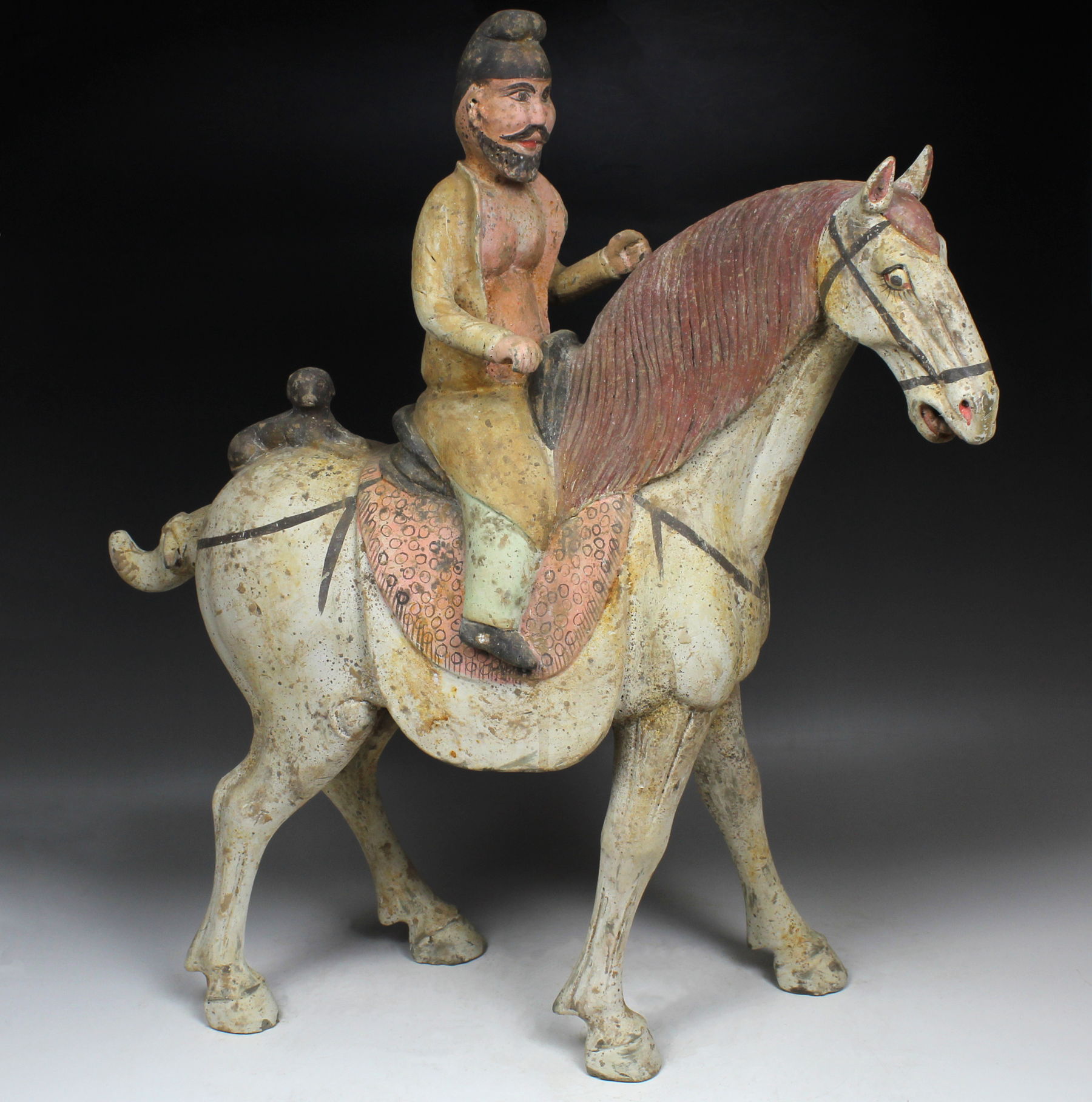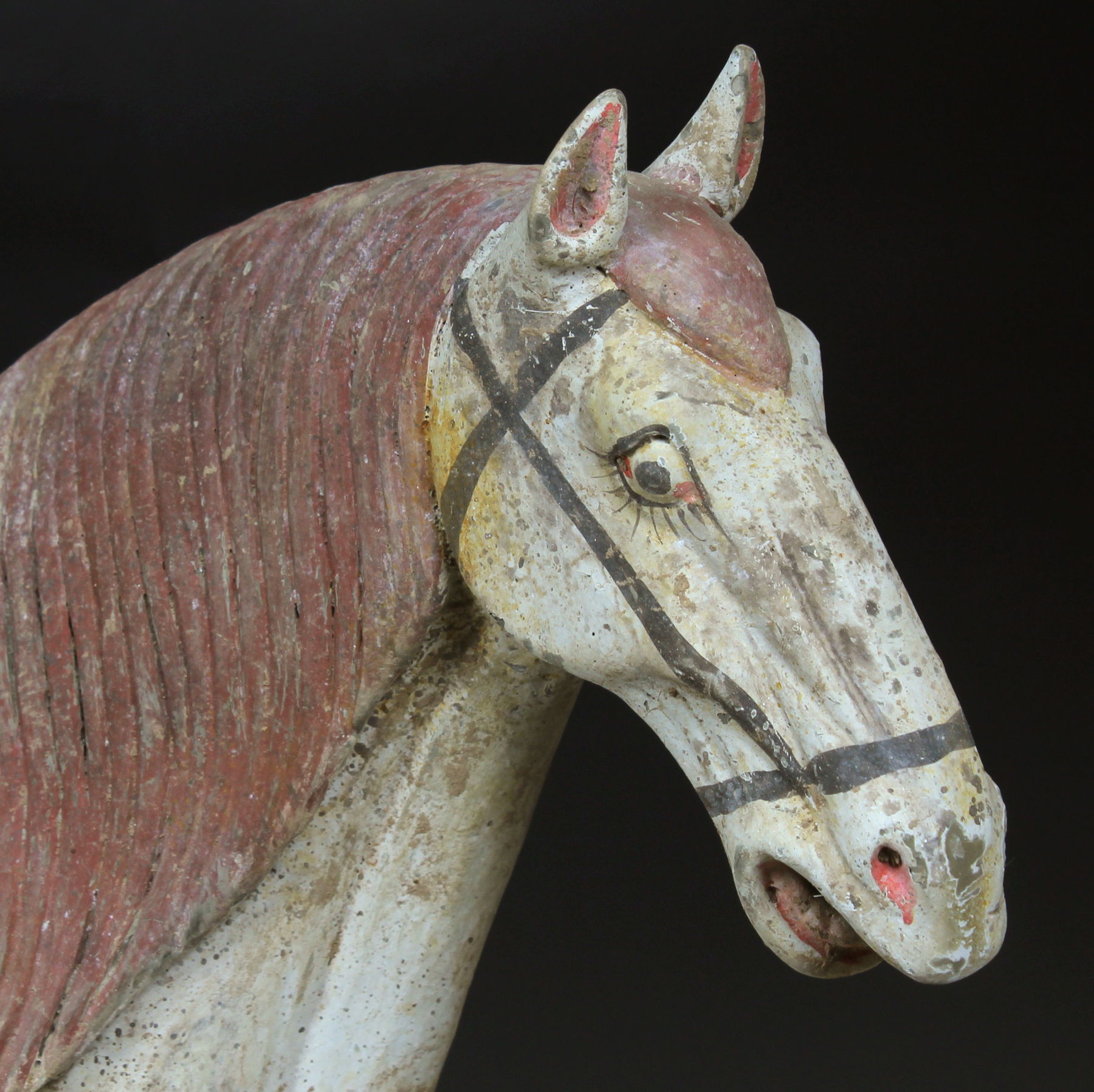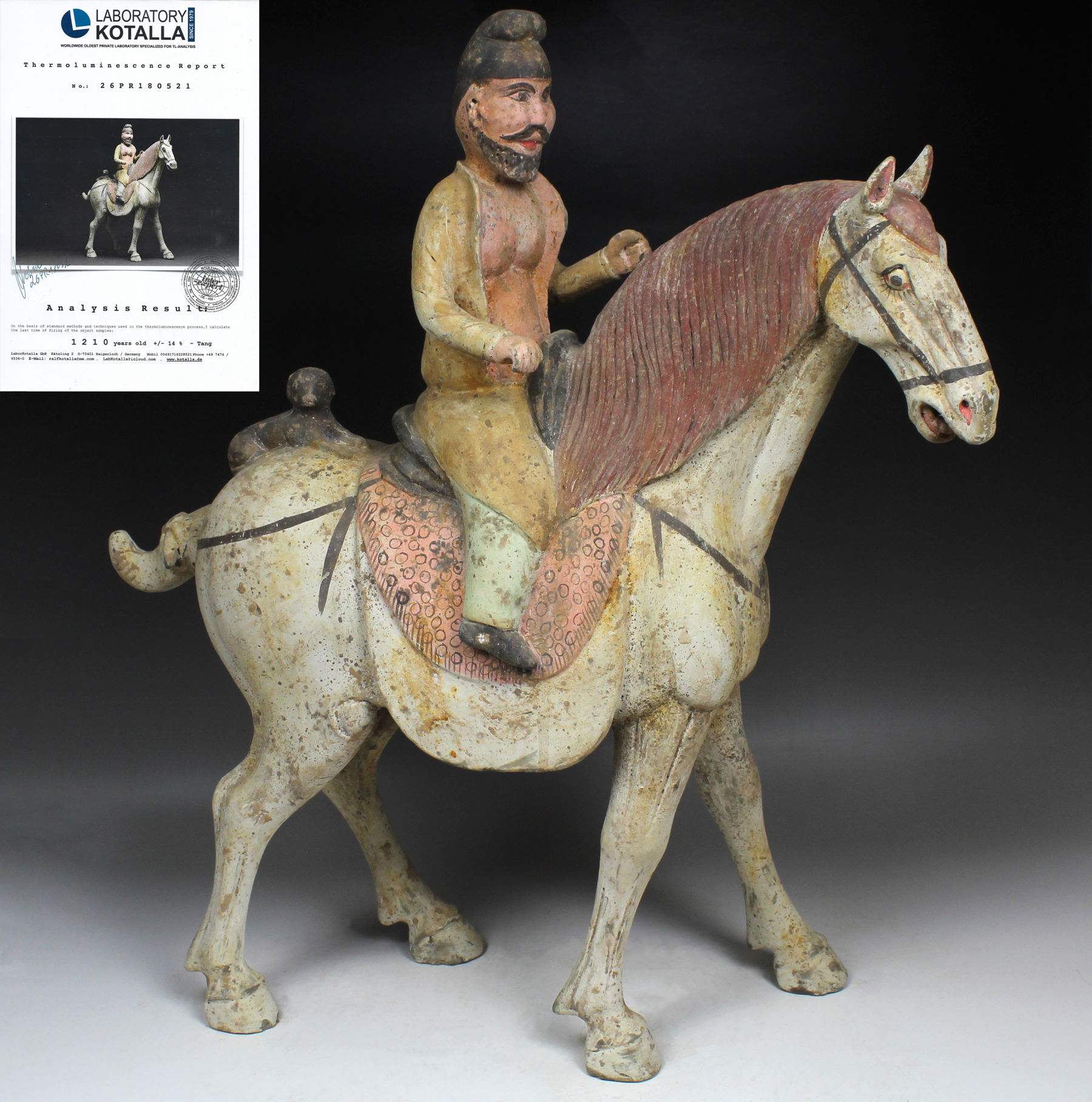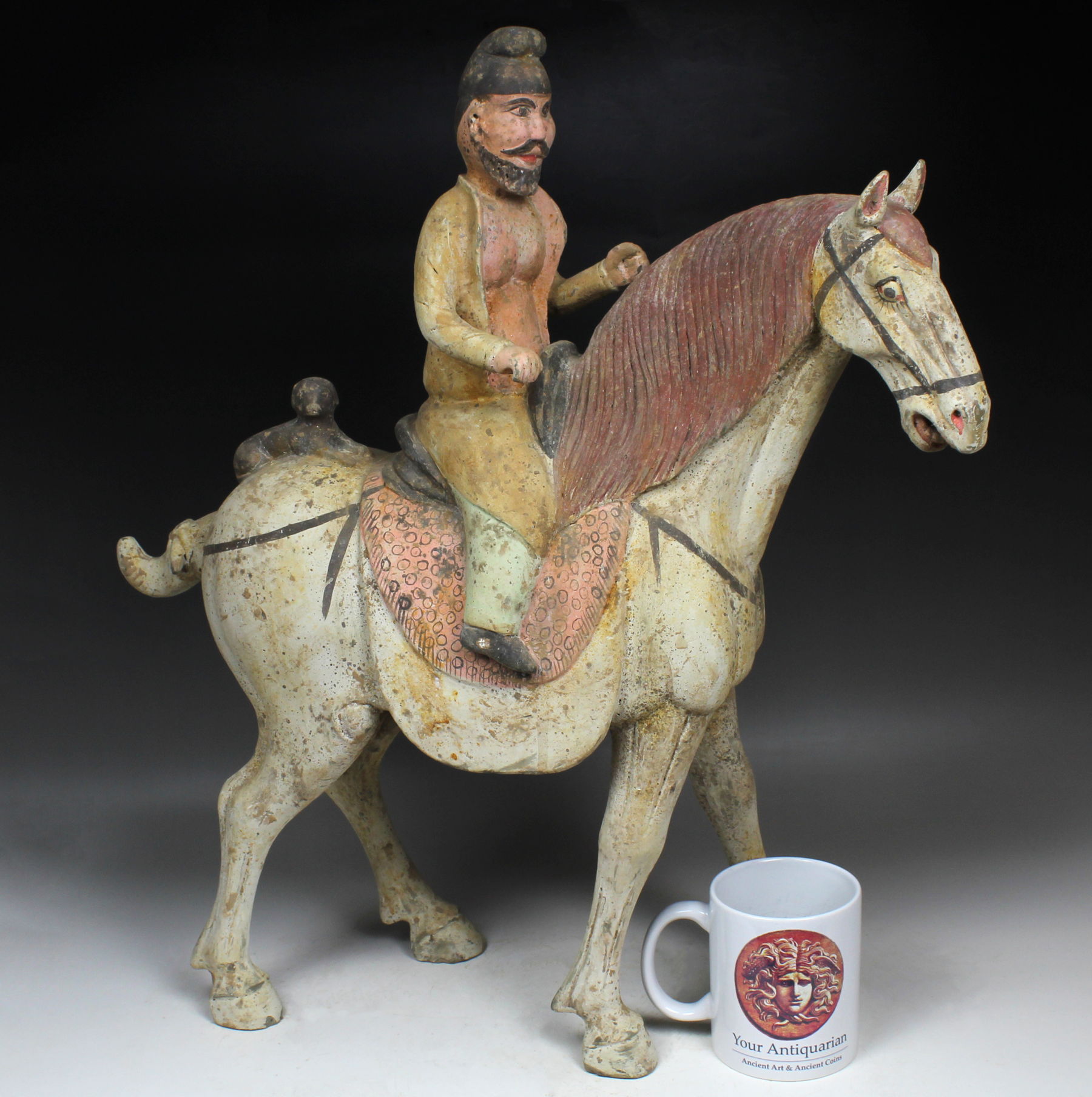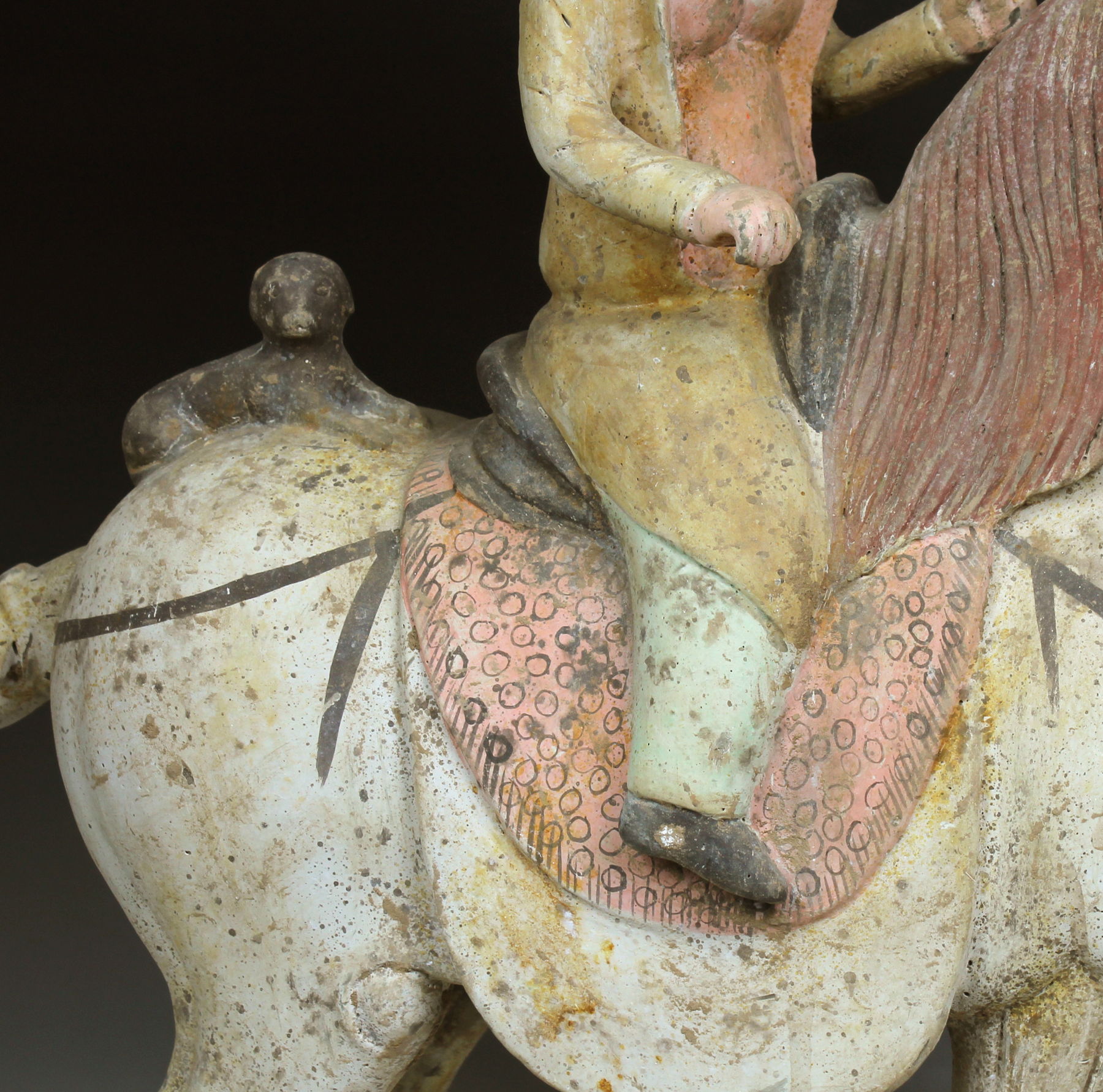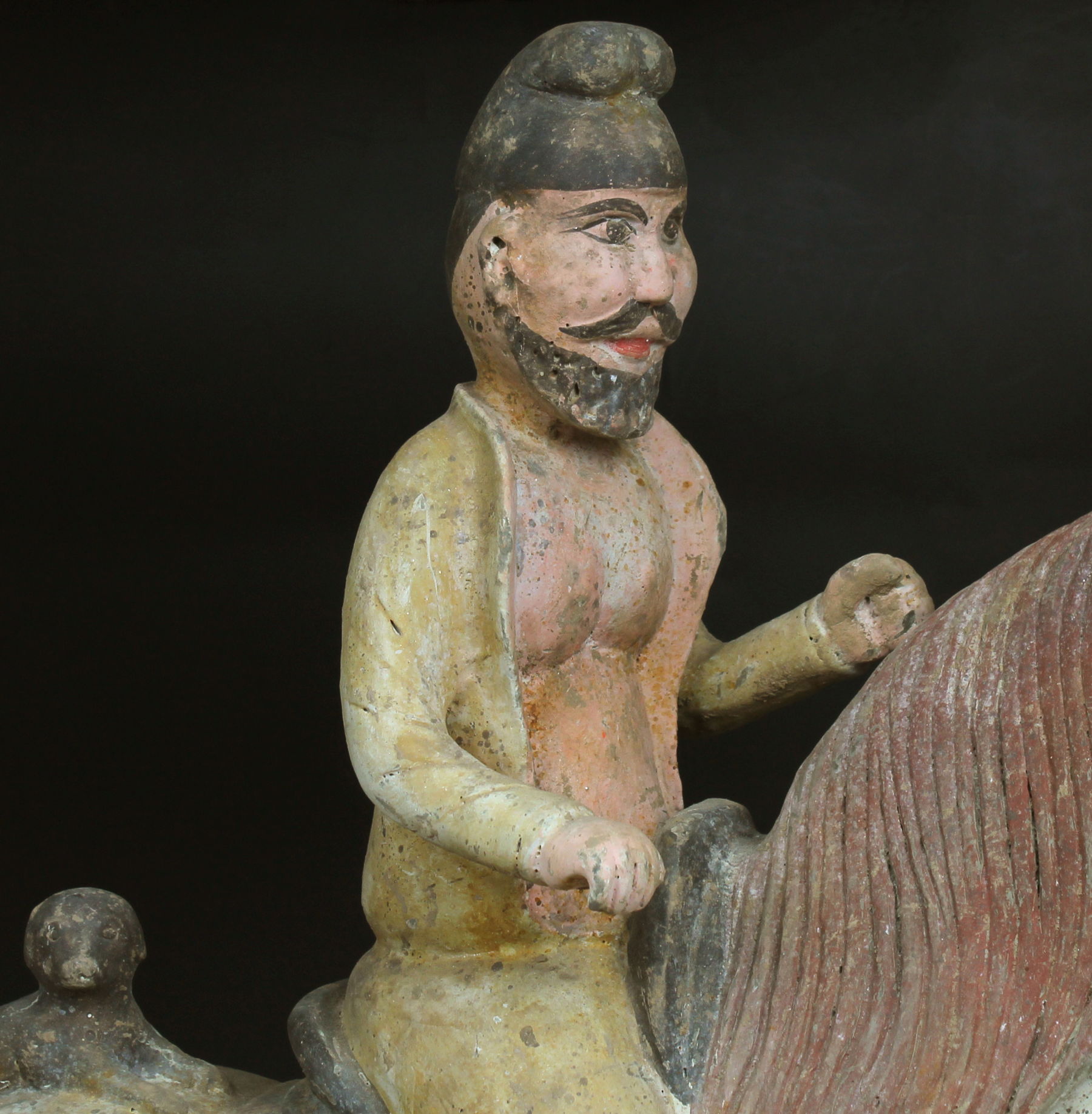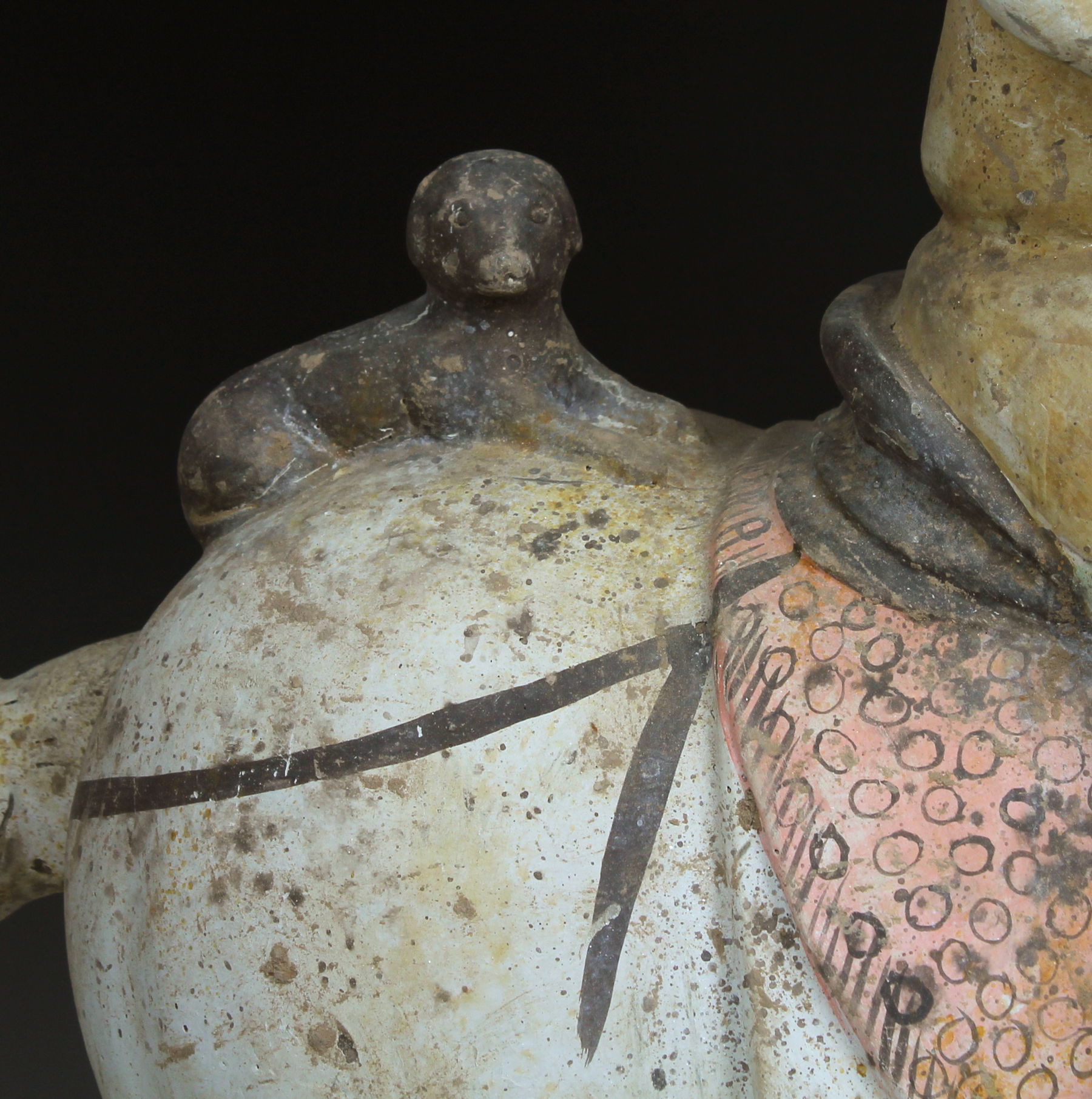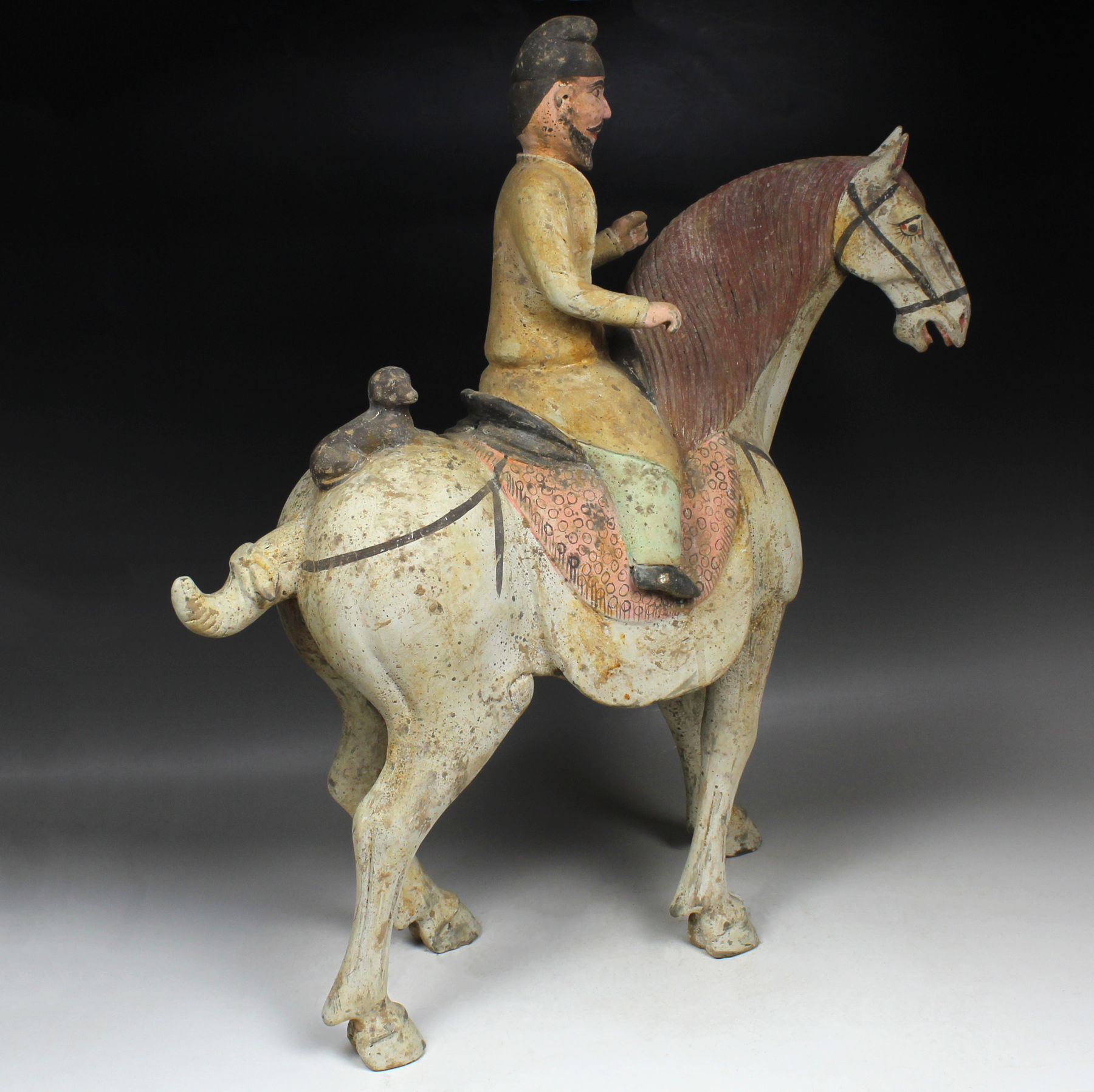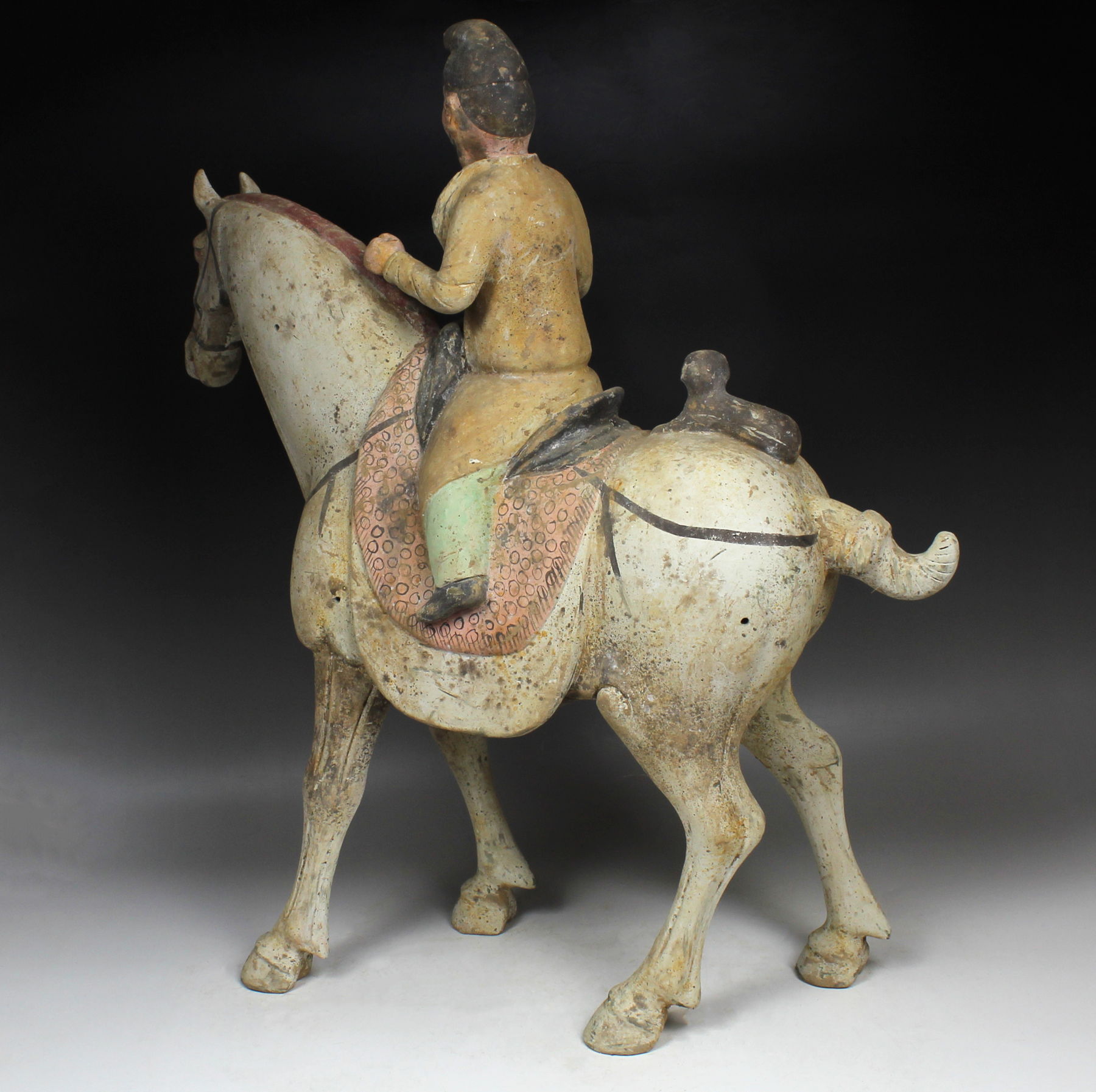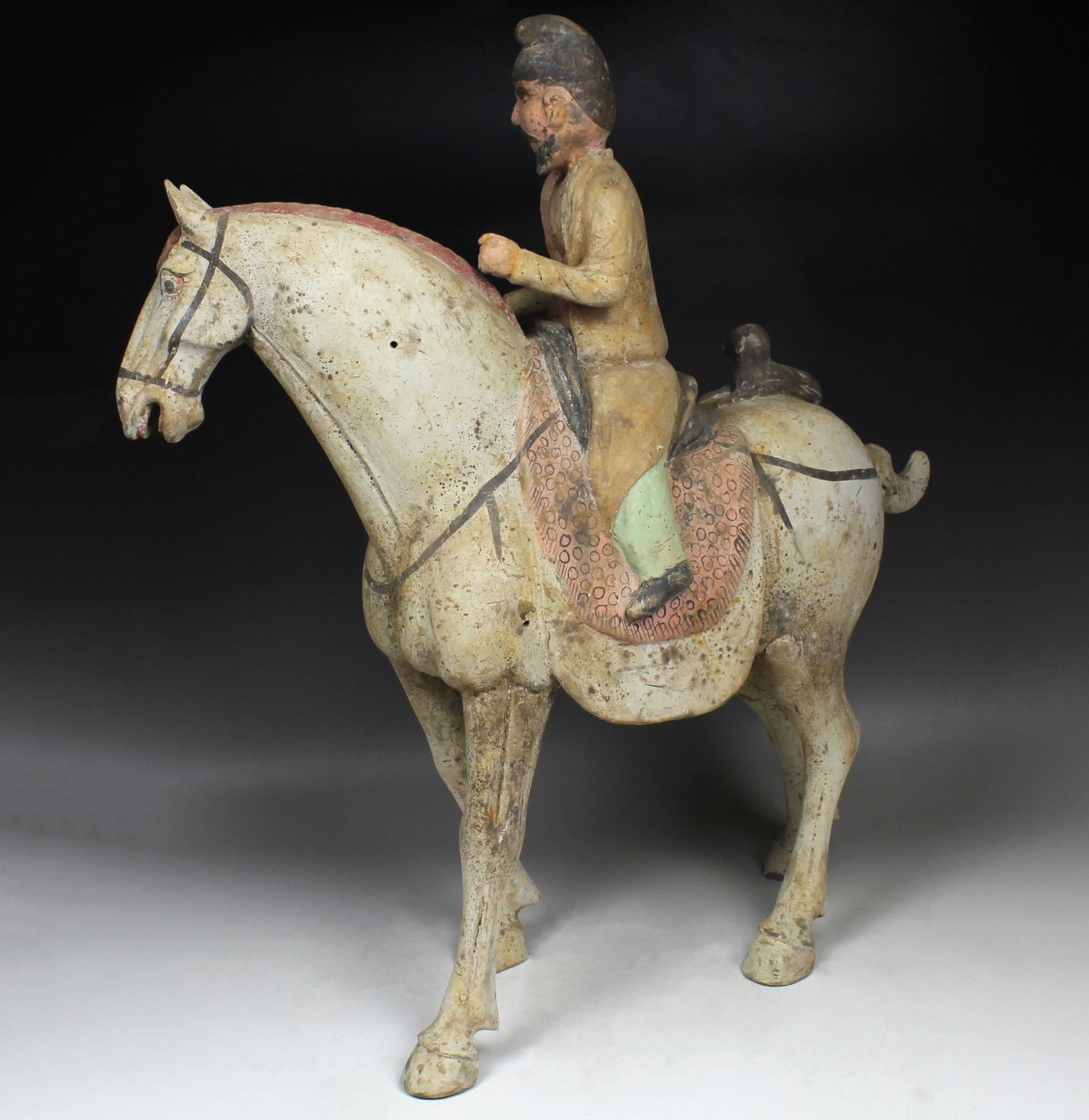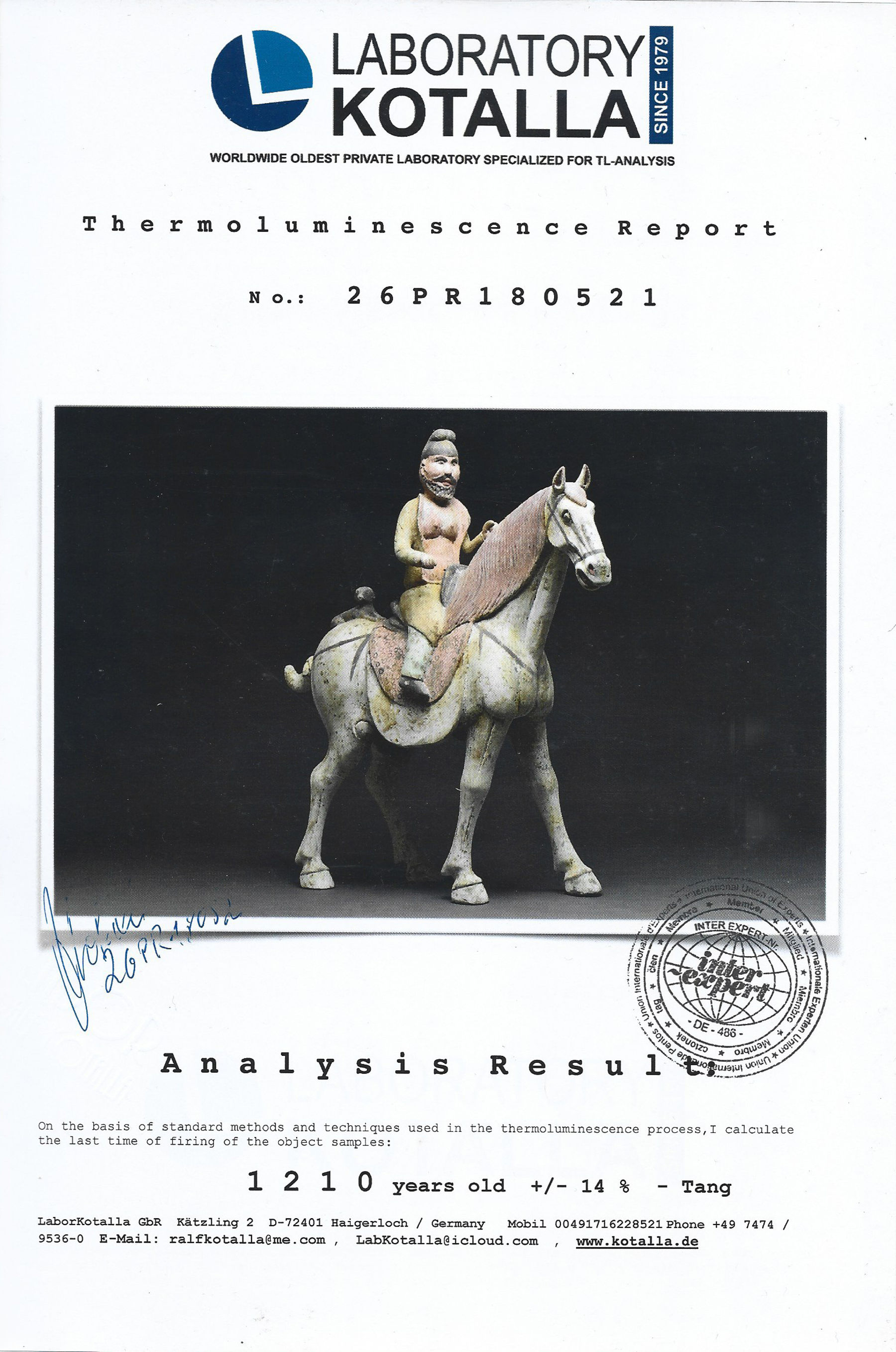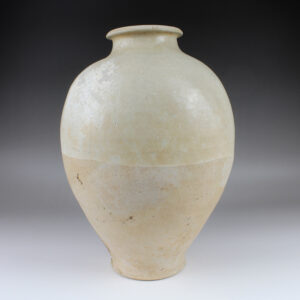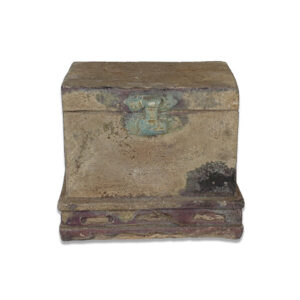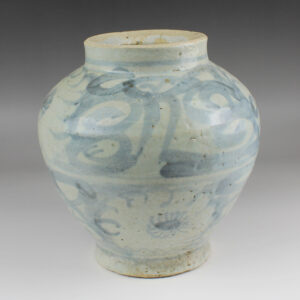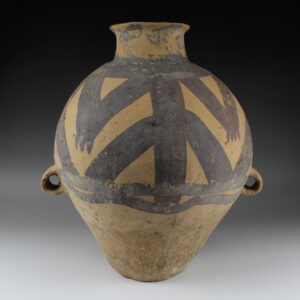Description
| ITEM | Statuette of a Sogdian rider |
| MATERIAL | Pottery |
| CULTURE | Chinese, Tang Dynasty |
| PERIOD | 618 – 907 A.D |
| DIMENSIONS | 560 mm x 510 mm x 175 mm |
| CONDITION | Good condition. Includes Thermoluminescence test by Laboratory Kotalla (Reference 26PR180521) |
| PROVENANCE | Ex Belgian private collection (2022), Ex English art gallery, Ex English private collection, East Anglian, acquired from Hong Kong art market in 1990s |
The Tang Dynasty (618-907 AD) in China was a period of great cultural flourishing and international exchange. During this time, the Tang Empire extended its influence along the Silk Road, facilitating vibrant trade and cultural interactions with various regions, including Central Asia. The Sogdians, an ancient Iranian people, played a significant role in these exchanges as they were prominent traders along the Silk Road. Sogdian merchants established communities in Tang China, contributing to the cosmopolitan atmosphere of the dynasty. These interactions led to the assimilation of foreign elements into Tang culture, enriching it with diverse influences.
One remarkable aspect of Tang-Sogdian cultural exchange is reflected in the depiction of Sogdian riders in Minqi art. Minqi, or “folk art,” encompassed a wide range of popular art forms in Tang China, including pottery figurines. These figurines often depicted scenes of daily life, including various ethnic groups such as Sogdian riders. The representation of Sogdian riders in Minqi art not only reflects the presence of Sogdian communities in Tang China but also underscores the cultural integration and exchange occurring during this period.
The depiction of Sogdian riders in Tang Dynasty Minqi art provides valuable insights into the multicultural nature of Tang society and its vibrant cultural exchanges along the Silk Road. These figurines serve as tangible evidence of the dynamic interactions between different ethnic groups and the assimilation of foreign elements into Tang culture.
唐朝(公元618年至907年)是中国文化蓬勃发展和国际交流的一个时期。在这段时间里,唐帝国沿着丝绸之路扩展了其影响力,促进了与包括中亚在内的各个地区的繁荣贸易和文化交流。苏格底亚人,古代伊朗人,在这些交流中扮演了重要角色,因为他们是丝绸之路上杰出的商人。苏格底亚商人在唐代中国建立了社区,为这个朝代的国际化氛围做出了贡献。这些互动导致了外来元素的同化,丰富了唐代文化,赋予了它多元的影响。
唐苏格底亚文化交流的一个显著方面体现在民器艺术中对苏格底亚骑手的描绘。民器,即“民间艺术”,包括唐代中国各种流行艺术形式,包括陶瓷人物塑像。这些塑像经常描绘日常生活场景,包括各种族群,如苏格底亚骑手。苏格底亚骑手在民器艺术中的描绘不仅反映了苏格底亚社区在唐代中国的存在,还强调了这一时期发生的文化整合和交流。
唐代民器艺术中对苏格底亚骑手的描绘为我们提供了有关唐代社会多元文化特性以及沿丝绸之路的活跃文化交流的宝贵见解。这些塑像作为动态的不同族群之间互动和外来元素同化进入唐代文化的有形证据。此外,它们突显了丝绸之路作为文化交流的通道的重要性,在这里,思想、商品和人流自由流动,为唐代文明的丰富性和多样性做出了贡献。


